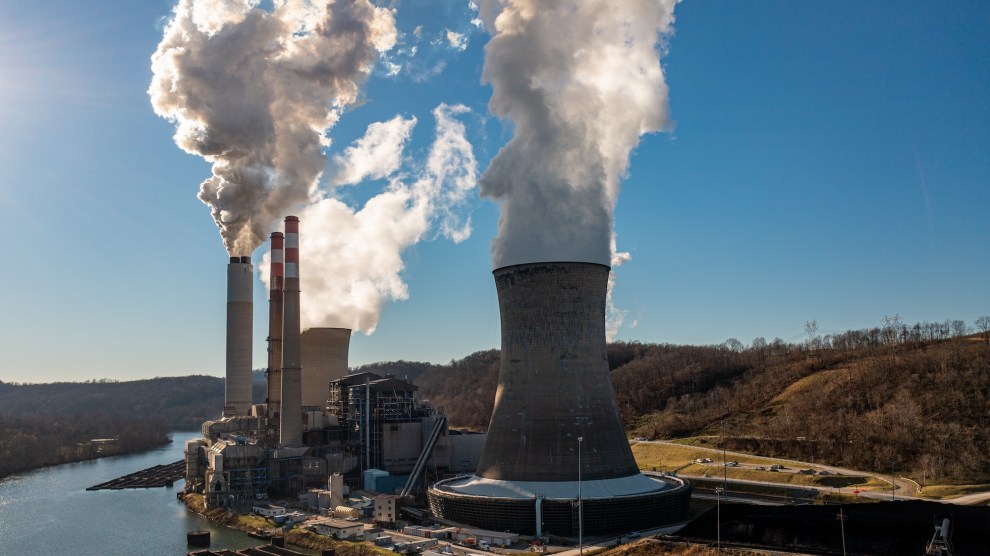At MoveOn.org’s town hall on climate change last Saturday, the Democratic presidential contenders were called upon to put their environmental views on the record, as well as to lay out how their plans differ from those of their competitors. The candidates provided ambitious energy plans across the board, a result that will please environmentalists but keep any one candidate from claiming the green mantle.
Each candidate supported increased investment in renewables and some kind of carbon cap-and-trade program, which would require companies that pollute over a set amount to buy credits from companies whose emissions come in under their allowance. The candidates were even similar on the numbers, according to the League of Conservation Voters (LCV) [pdf]: Nine of the ten candidates support reducing carbon emissions by at least 80 percent by 2050. (Mike Gravel, who has no articulated position, is the lone exception.) The same nine would mandate that 20 percent of America’s electricity come from renewable sources and that our energy consumption is reduced by 10 percent by 2020. These are numbers that would satisfy “even the most ardent environmentalist,” says Cathy Duvall, the Sierra Club’s national political director.
Hillary Clinton, for her part, was the only candidate to mention “Healthcare for Hybrids,” a program that would provide American automakers relief in paying retired workers’ health care costs (a responsibility none of their overseas competitors carry), if they agree to invest a portion of the savings into fuel-efficient cars. Yet, the program is also a major plank of Barack Obama’s environmental policy.
If anyone came close to outshining the pack, it was John Edwards, who sounded all the right notes. “We don’t need political calculation, caution, baby steps, half measures,” he said. “We’re past all that.” He supported a carbon cap with companies participating in an auction to determine their carbon allowance, with the generated revenue going to renewables research. He called for strong restrictions on new coal plants and proposed a $1 billion investment in fuel-efficient cars, along with a required 40 mpg on all American cars by 2016. In a move that no other candidate matched, he suggested opening up the power grid, so that small towns and grassroots organizations could create their own energy sources, with tax credits given to those who created renewable ones.
In addition to being bolder than the other frontrunners, Edwards was simply more rhetorically economical, which is to say he was faster and more elegant at articulating sound-bite portions of the candidates’ common agenda. This trumped whatever power the second-tier candidates might have wielded with their pet projects, like Dodd’s corporate carbon tax, a per-ton fee on businesses for carbon emissions, or Kucinich’s Works Green Administration, which would incorporate a green philosophy into every agency in the federal government — for example, having the Department of Education mandate environmental education in America’s schools.
Edwards, by a wide margin, was the audience favorite, too. When MoveOn members were asked to vote on who they believed would be the best steward of the environment, Edwards received 33 percent of the vote, more than double that of Kucinich, Clinton, and Obama, who tied for second. In the end, however, the environment likely won’t be a make-or-break factor for the Dems, since, on this issue, all of the candidates are more or less on the same page. “They are highlighting different aspects of energy policy,” says Duvall, “but the goals that they have all committed to are pretty similar.” A Democrat may have to wait until the general election before being green actually matters.
















